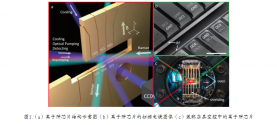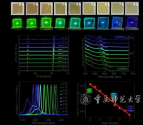The construction of the world's most powerful solution-type medical isotope test reactor commenced on Tuesday in Southwest China's Sichuan Province, according to information obtained by the Global Times from the China National Nuclear Corporation (CNNC). This development aims to better address the diagnostic and treatment requirements of tens of millions of people in China.
After becoming operational, this reactor, constructed by the Nuclear Power Institute of China under CNNC, is projected to have an annual production capacity of 100,000 curies of molybdenum-99 and 20,000 curies of iodine-131. This will address the longstanding reliance on imports and the bottleneck issue concerning these two isotopes.
Furthermore, this development is expected to catalyze the downstream industry, generating an output value of more than 4 billion yuan ($0.56 billion), thereby significantly enhancing cancer diagnosis and treatment capabilities in China.
Medical isotopes are typical radioactive isotopes that have been successfully employed in the field of medicine. Carbon-14, a mainstream medical isotope, is utilized in breath tests to detect Helicobacter pylori during routine physical examinations.
Zhao Guang, the director of the medical isotope department at the Nuclear Power Institute of China, told the Global Times that dozens of medical isotopes, such as carbon-14, iodine-131, iodine-125, and strontium-89, are highly sought-after in the detection and treatment of major diseases. However, China has traditionally depended heavily on imports for its supply of medical isotopes.
A research report from the Nuclear Power Institute of China indicates that in recent years, China has depended on imports for more than 90 percent of medical isotopes produced through nuclear reactors, with a limited variety. Meanwhile, there is a gradual increase in domestic demand for medical isotopes.
You are using an out of date browser. It may not display this or other websites correctly.
You should upgrade or use an alternative browser.
You should upgrade or use an alternative browser.
News on China's scientific and technological development.
- Thread starter Quickie
- Start date
More automation and A.I is always good. Also a reminder that despite what some people have stated *coughPeterZeihan*, China has some of the most waterways/rivers in the world, surpassing both America and Europe and China's waterways are the busiest in the world. Better use of their existing waterways is a very good way to improve the economy and logistics system in the country.China has pinned its hopes on digital technologies to modernise its waterway transport system, aiming to boost its competitiveness in shipping by improving efficiency and sustainability.
A plan unveiled by the Ministry of Transport on its website earlier this month targets implementation of smart technologies like 5G, big data and artificial intelligence across all major ports and waterways by 2027.
To make China’s ports more intelligent, the ministry said it would urge container terminals to further automate work flows by expanding use of technologies like autonomous vehicles, driverless container trucks and remote-controlled infrastructure.
Authorities also aim to build a digital network for the country’s higher-quality inland waterways as well as for terminals at major coastal ports, such as Shanghai, Dalian and Tianjin.
The ministry said it would encourage the use of smart technologies in maintenance and shipping operations. For example, drones and unstaffed ships could patrol waterways, while a geographic information system and the Internet of Things could help digitalise docks and channels.
Ports and waterways will be expected to employ more new energy resources and devices in their development.
“Compared to roadways and railways, water transport has lower costs, less pollution, less traffic, and better safety,” said Dong Yang, an associate professor at the Hong Kong Polytechnic University, who specialises in shipping and logistics.
“That is why China has worked for years to develop it, and using artificial intelligence to improve decision making is one necessary step forward.”
Jin Qihuan’s team from the Department of Physics has made progress in research on ion trap infrastructure
Tsinghua News Network, January 31st: Ion trap systems are one of the popular areas of quantum information research. They have the advantages of long coherence time and high quantum gate fidelity, and are widely used in quantum computing and quantum simulations. At present, most ion trap quantum information processing is completed on one-dimensional ion chains, and two-dimensional ion crystals can greatly improve the scalability of ion trap systems and be used to explore novel two-dimensional quantum physics. In the past ten years, domestic and foreign research teams have tried many times to expand the ion trap to two dimensions. However, they have not been able to achieve it due to problems such as micro-vibration.
Recently, a new study conducted by the team of Professor Jin Qihuan from the Department of Physics of Tsinghua University proved for the first time that two-dimensional ionic crystals can be used for quantum information processing. This research is based on the team's self-developed ion trap chip trapping two-dimensional ion crystals, and cooling ytterbium ions ( 171 Yb + ) to a phonon number less than 1 through electromagnetic induced transparency, and then cooling it in two ion traps composed of 4, 7, and 10 ions. Quantum simulation experiments were carried out on dimensional ion crystals, and the ground state of the Ising model was successfully prepared by adiabatically reducing the strength of the transverse magnetic field.

Tsinghua News Network, January 31st: Ion trap systems are one of the popular areas of quantum information research. They have the advantages of long coherence time and high quantum gate fidelity, and are widely used in quantum computing and quantum simulations. At present, most ion trap quantum information processing is completed on one-dimensional ion chains, and two-dimensional ion crystals can greatly improve the scalability of ion trap systems and be used to explore novel two-dimensional quantum physics. In the past ten years, domestic and foreign research teams have tried many times to expand the ion trap to two dimensions. However, they have not been able to achieve it due to problems such as micro-vibration.
Recently, a new study conducted by the team of Professor Jin Qihuan from the Department of Physics of Tsinghua University proved for the first time that two-dimensional ionic crystals can be used for quantum information processing. This research is based on the team's self-developed ion trap chip trapping two-dimensional ion crystals, and cooling ytterbium ions ( 171 Yb + ) to a phonon number less than 1 through electromagnetic induced transparency, and then cooling it in two ion traps composed of 4, 7, and 10 ions. Quantum simulation experiments were carried out on dimensional ion crystals, and the ground state of the Ising model was successfully prepared by adiabatically reducing the strength of the transverse magnetic field.

Financing 6.7 billion! Shanghai Yuanxin Satellite accelerates satellite Internet construction!
Recently, Shanghai Yuanxin Satellite Technology Co., Ltd. (abbreviated as Yuanxin Satellite) completed a 6.7 billion yuan Series A financing. This round of financing was led by China Development Bank Manufacturing Transformation and Upgrading Fund. Founding shareholder Shanghai Lianhe Investment continued to provide strategic support. Guoke Capital, Guosheng Capital, SAIC Hengxu Capital, CCTV Media Fund, Guotai Junan, China Science and Technology Star, AsiaInfo Security , as well as Xinding Capital, Gaoyuan Capital, Meilanhu Investment, Jinyan Asset Management, and Zhenghedao Investment are following the investment. The funds raised will be mainly used for constellation construction, technology research and development, market development and daily operations of the company.
It is reported that Yuanxin Satellite was established in March 2018. It deploys and operates low-orbit satellite constellations through an international and commercial model to provide global customers with low-orbit satellites with large bandwidth, low latency, high quality, high security, and global coverage. Satellite internet services and industry solutions.
News from Xinding Capital shows that Yuanxin Satellite is carrying out commercial competition and cooperation with leading international companies, accelerating the construction of an "air, space and ground integration" network and achieving global commercialization, which will effectively promote the establishment of key commercial aerospace industry chains and industry standards. Promote the development of satellite Internet and enhance industrial competitiveness, and expand a broader development space for commercial aerospace.
Key progress has been made in the field of perovskite lasers!
Recently, Professor Zhang Dingke's team from the School of Physics and Electronic Engineering of Chongqing Normal University has made important research progress in the field of perovskite lasers. The research was published under the title "Linearly Manipulating Color Emission via Anion Exchange Technology for High Performance of Amplified Spontaneous Emission of perovskites" In the academic journal "Advanced Materials" (District 1, Chinese Academy of Sciences, top journal, impact factor 32.086). Chongqing Normal University is the first signing unit, Professor Zhang Dingke’s graduate student Liu Nian is the first author of the paper, Professor Zhang Dingke, Associate Professor Pi Mingyu and Professor Liu Xinfeng of the National Nanocenter are the co-corresponding authors.
All-inorganic lead halide perovskites (LHPs) have broad application prospects in the field of optoelectronics and photovoltaic devices due to their advantages such as high absorption coefficient, high fluorescence quantum efficiency, narrow half-peak width, and simple full solution processing .

In view of this, Professor Zhang Dingke's team proposed a simple vapor/solid anion exchange strategy to control the reaction process and achieve large-scale adjustment of the band gap and amplified spontaneous emission (ASE) wavelength, which exhibits a temperature-dependent anion exchange rate. . By optimizing the reaction temperature, the team can linearly manipulate the ASE wavelength at 90°C only by controlling the reaction time. There is an obvious linear relationship between the ASE peak position and reaction time. In addition, compared with the CsPbClBr2 film obtained by the liquid-phase anion exchange method , the perovskite film prepared by the gas/solid anion exchange technology has superior film quality and enhanced ASE performance. They attributed the improved ASE performance to the extension of the ion exchange reaction time, which resulted in slow crystal nucleation and crystal growth kinetics, ultimately forming a uniform and dense film. Finally, the team analyzed the mechanism controlling the anion exchange reaction. This work holds promise for the future development of high-quality, full-color tunable lasers using simple and controllable techniques.
not being an implant is less novel, but 10000x more likely to gain medical usage. The cost and risk of brain surgery alone is a gigantic barrier to adoption.
No doubt about that. Much easier to change out as well should the BCI reach the end of its useful lifespan or when switching to an upgrade. Repeated brain surgery would be an absolute nightmare.not being an implant is less novel, but 10000x more likely to gain medical usage. The cost and risk of brain surgery alone is a gigantic barrier to adoption.
escobar
Brigadier
Some 1,061 patents involving RISC-V were published in China last year, up from 10 in 2018
Sure. But where are the chips? T-head released some great core designs and chips, even made them open source, but they lack support for the Vector extension according to the final 1.0 standard. So compilers basically don't support its vector instructions. US developers of open source compilers also sabotage submissions to add support of its earlier version of the Vector extension to the main code base.
